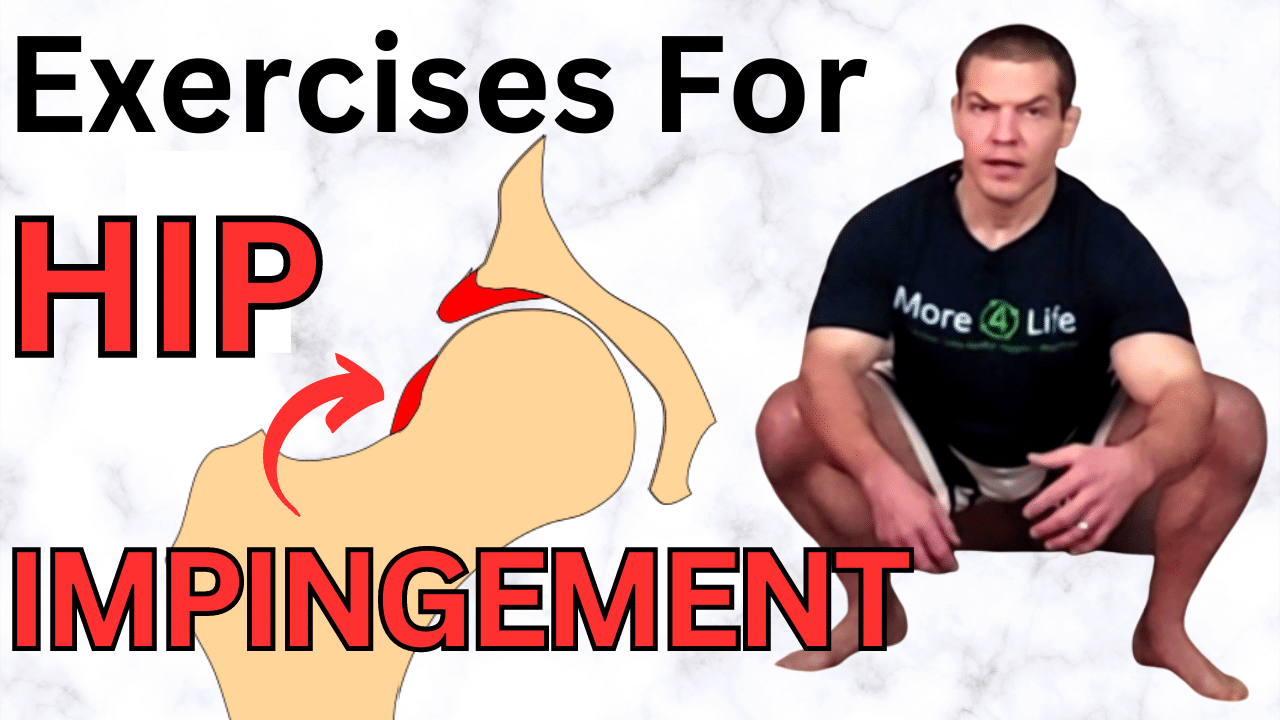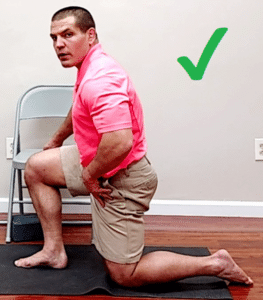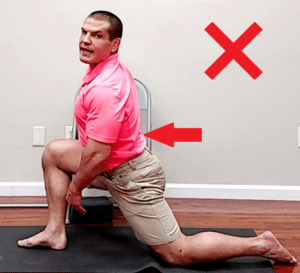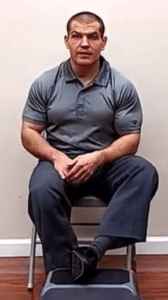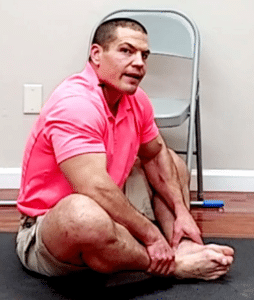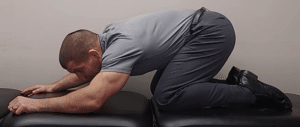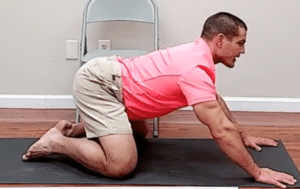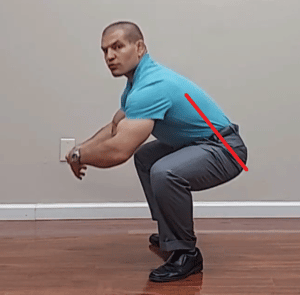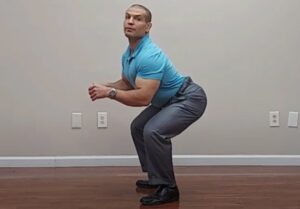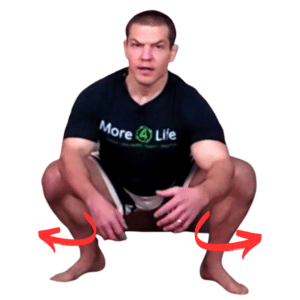What Are The Best Exercises For Hip Impingement?
If you have femoroacetabular impingement (FAI), you may wonder what you can do to heal it, or if it's even possible without surgery. Watch the video to learn 5 exercises for hip impingement to help you relieve pain and improve your mobility without surgery.

In this post, you'll learn:
- What Causes Hip Impingement?
- What Does Hip Impingement Feel Like?
- How Do You Fix Hip Impingement?
- Is Hip Impingement Curable Without Surgery?
- Exercises For Hip Impingement
- Can Physical Therapy Help Hip Impingement?
What Causes Hip Impingement?
Hip impingement, or femoroacetabular impingement (FAI), is a condition where the bones of the hip joint rub against each other. This can cause pain and limited hip mobility.
Furthermore, this rubbing can lead to tears in the labrum, the cartilage that lines the hip socket.
To understand what causes hip impingement, it's helpful to first understand the anatomy of the hip joint.
The hip joint is a ball-and-socket joint, where the ball-shaped head of the femur (thigh bone) fits into the cup-shaped acetabulum of the pelvis.
In a healthy hip joint, there is enough space between the ball and the socket to allow for smooth movement (left picture below).
However in the case of femoroacetabular impingement, there's a structural defect on either the femur (ball), or the acetabulum (socket).
- An abnormality of the femur is referred to as a cam impingement (middle picture above)
- An overhang of the acetabulum is referred to as pincer impingement (right picture above)
Both cam- and pincer-type impingements can also occur simultaneously. This is known as mixed hip impingement.
Hip impingement can be caused by developmental abnormalities, repetitive hip movements, or previous hip injuries or surgeries.
What Does Hip Impingement Feel Like?
Hip impingement can cause a range of symptoms. However, the most common symptoms of hip impingement include:
- Pain in the groin
- Reduced range of motion in the hip
- Clicking or popping sounds in the hip joint
- Pain that worsens with forward bending or squatting
- Difficulty sitting for long periods of time
- Difficulty tying shoes or putting on pants
- Difficulty getting out of the car
Keep in mind that these symptoms can also be causes by other hip problems, such as hip arthritis or labral tears.
How Do You Fix Hip Impingement?
So now that you know what casues hip impingement, what you REALLY probably care about is how you fix hip impingement.
The first line treatment is conservative treatment such as the exercises that I'll discuss below.
Physical therapy for hip impingement focuses on decreasing pain, improving hip mobility, and improving function.
However, conservative treatments don't change the bony abnormalities in the hip.
Is Hip Impingement Curable Without Surgery?
In most cases, you can relieve the symptoms of hip impingement without surgery.
Conservative treatment allows most people with hip impingement to engage in normal daily activities, exercise, and many sports without pain.
Conservative treatment doesn't change the anatomy of the hips though, so some people do need surgery for femoroacetabular impingement. However, surgery is the last-resort treatment for hip impingement.
It's best to exhaust your conservative treatment options before having surgery. Even if you've had physical therapy before, it may help to see a specialist physical therapist before considering surgery.
Exercises For Hip Impingement
So what are the exercises for hip impingement?
Exercises for hip impingement can be classified in 3 different categories:
- Indirect Stretching Exercises For Hip Impingement
- Direct Stretching Exercises For Hip Impingement
- Strengthening Exercises For Hip Impingement
Indirect Stretching Exercises For Hip Impingement
Indirect exercises are ones that move away from the direction of restriction.
The impingement position of the hip is in the direction of hip flexion, abduction, and internal rotation.
Therefore, indirect exercises move in the opposite direction:
- Hip flexion
- Hip abduction
- Hip external rotation
Indirect stretching exercises for hip impingement are good for relieving symptoms and avoiding impingement.
Here are some indirect stretching exercises for hip impingement:
Hip Flexor Stretches
Your hip flexors tilt the pelvis forward which brings the rim of the acetabulum down toward the head of the femur.
Essentially, stiffness in the hip flexors creates hip flexion even when you're not intending to flex your hip.
There are many ways to do hip flexor stretches. However, one of the best ways to do them is kneeling on one knee in a lunge position.
Roll your pelvis underneath of you to flatten your lower back.
Then push your pelvis forward until you feel a stretch in the front of your hip and thigh.
Don't allow your lower back to arch.
Hold the stretch for about 1 minute.
If for some reason you can't get in a lunge position, here are 3 additional ways you can stretch your hip flexors.
Piriformis Stretch
This exercise helps improve hip external rotation.
To do the piriformis stretch, sit in a chair and cross one ankle over the opposite knee. Allow your knee to drop out to the side as far as you can comfortably.
If you don't have the range of motion to get your ankle crossed over your knee, you can do a modified version with your foot on a stool or an ottoman.
Hold this stretch for about 1 minute.
Groin Stretch (Butterfly Stretch)
This stretch is for the hip adductor muscles (inner thigh muscles). Moving the thighs away from midline decreases hip impingement.
To do this exercise, sit on the floor with the bottoms of your feet together and knees out to the side.
Allow your knees to fall out to the side as far as you fell comfortable going.
If sitting in this exercise causes hip impingement symptoms from being in too much hip flexion, you can lean back while stretching.
Hold the stretch for 1 minute.
Direct Stretching Exercises For Hip Impingement
Direct exercise move into the direction of restriction. For the hip impingement, this means stretching into hip flexion, adduction, and/or internal rotation.
You have to be careful with these type of exercises because you can actually cause hip pain from stretching if you stretch too far.
However, hip flexion is a position you need to bend, squat, get up from a chair, tie your shoes, and many other daily activities.
Therefore, at some point, you'll likely want to improve your hip flexion range of motion as much as possible.
Quadruped Hip Flexion Exercise
When you go into hip flexion, the "ball" of the hip joint needs to glide backwards in the hip socket. If the back part of your hip joint capsule is stiff, that can create impingement in the front of the hip as you go into hip flexion.
To improve the posterior hip capsule mobility as well as hip flexion, you can do a rocking back on hands and knees exercise.
This uses your bodyweight to push the head of the femur backwards in the socket as you go into hip flexion.
It's important to keep your lower back flat or slightly arched in order to make sure the motion is coming from your hip joint.
If your hip joint is stiff and your lower back is relatively more flexible, it's easy to allow your lower back to round out.
You don't want to let that happen.
Since you are going into hip flexion, you may feel some pinching in the front of your hip as you rock backward.
STOP at the point where you start to feel that pinching.
This is NOT a "no pain, no gain exercise."
Spreading your knees out slightly as you stretch (hip abduction and external rotation), may allow you to get farther into hip flexion without getting hip impingement symptoms.
Rock back as far as you can comfortably, and hold for 10 seconds. Rock back forward and repeat 5-10 times.
Strengthening Exercises For Hip Impingement
Hip impingement syndrome is mostly a mobility problem. With that being said though, there are certain strengthening exercises that can help.
One of the most important functional exercises for hip impingement is squatting.
Whether or not you do squats for exercise, you likely have to squat in your daily life to pick things up from the floor or get up from a chair.
Squats help strengthen your glutes as strengthen your core.
In order to do a squat correctly, you want to make sure that that you keep our back flat.
If you allow your back to arch, your pelvis tils forward and will likely cause hip impingement as you squat. This will also limit the depth of your squat.
Additionally, you may want to spread your feet a little wider and turn your toes out slightly. This allows hip abduction and external rotation, which will allow you to get deeper into your squat.
Keep your knees pushed out to the side as you squat to maintain your hip external rotation.
Only squat down as far as you can comfortably. Don't squat to the point of pain!
Other Treatments For Hip Impingement
So those were the 5 exercises for hip impingement.
In addition to hip exercises other physical therapy treatments can help hip impingement. Some examples include hip joint mobilization, trigger point therapy, or dry needling. These can help relieve hip pain and improve mobility.
If you need help for hip impingement, tap the button below to request an appointment with one of our specialist physical therapists. We'll help you figure out what factors are contributing to your symptoms and what you need to do to recover.

